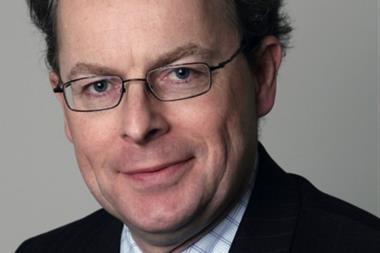Pension funds and asset managers are under pressure to diversify their investments to meet growth targets, while the choice of financial instruments available to them grows ever wider and more complex, as does the range of markets across the globe, including a growing number of online trading platforms. Investors need systems that can help them manage their orders and keep tabs on their portfolios, while offering straight-through processing of transactions for greater efficiency and lower costs. A range of systems are now available that offer broad functionality and some specialised features for the European investment market.
The first thing those managing investments should consider when looking for a system to support their activities is whether they want an all-in-one package that will cover front, middle and back office, or are looking for best-of-breed applications for each of the functions. While there are a number of front office system suppliers that offer analytics, trading and position keeping, and others that specialise in the risk management functions of the middle office, or the settlement and accounting of the back office, this article will focus primarily on front-to-back office systems. (IPE will be looking at some of the more specialist systems over the next few months.)
“One of the main advantages of an integrated system is that interfaces [to connect front, middle and back office_applications] are already in place, so the implementation time is shorter and less costly,” says Jonathan Hicks, associate director at investment software specialist DST International, based in Kansas City, Missouri. Furthermore, technology risk – implementation time and budget overrun, etc – is minimised. The user also has only one supplier relationship to manage instead of several. And a single database shared between the front and back offices means easy and efficient flows of data between the different parts of the system, says Hicks.
A front office module should include functions for analysing proposed trades and for their execution, or for passing the orders through to others who might carry this out, such as a central execution desk or broker. But from the point of entering orders or deals onwards, the system should automate as many functions with respect to processing trades as possible – not only for efficiency, but also to reduce errors that can arise from re-entering trades.
While an integrated front-to-back office system offers significant advantages in terms of a simplified technology infrastructure and straight-through processing, it must not come at the expense of limited functionality. The system must be flexible to meet the requirements of a variety of users, and as funds look to a wider range of investment and hedging opportunities, it must support a broad a range of instruments, says Hicks.
Although more than 80% of the investment process is generic across sectors, there are a number of differences between pension fund and asset management activities that a system must recognise and support, says Mike Baranack, managing director for Europe for New Jersey-based systems supplier Princeton Financial Systems. A prime concern of asset managers is whether they can get high- quality timely data for their decision- making. For example, for fixed income Princeton’s PAM system has a user-friendly interface to the Bloomberg information and analytics system.
Of fundamental importance to pension funds is whether the system supports the strategy of a firm, says Baranack. When Blue Sky Group, the pension fund of Dutch airline KLM (formerly known as KLM Pensionfondsenkantoor) decided to move towards a pooling structure to gain economies of scale with the portfolios that it manages, it realised that its existing system would no longer be able to support its activities. After a review of systems on the market, it chose Princeton’s PAM for Mutual Funds investment management and accounting.
Key considerations in the choice were the flexibility of the system to handle the fund’s strategies, its front-to-back office functionality and modern technology, says Paul Vermeulen, head of operations at Blue Sky Group.
Within the front-to-back office capability, there are a number of functions that an investment management system should support. These include data administration, order management, compliance, portfolio modelling, position management, cash management, risk management, performance measurement and attribution, corporate actions, accounting and general ledger reporting. Today’s systems tend to be modular and firms can often choose which modules to install and to add others at a later date. Some firms may prefer to use separate, specialised applications for some functions, such as performance measurement and attribution or risk management.
Although pension funds and asset management firms range enormously in size, suppliers do not really distinguish themselves by the size of their customers. Suppliers tend to have customers across much of the spectrum, although start-ups might be hard pressed to afford some of the bigger systems, which will inevitably have functions that they will not use, says Baranack. Princeton customers besides Blue Sky Group include Dutch pension fund giant ABP and asset mangers Swissca and Genesis Asset Management. DSTi has some very large clients, such as Fortis Bank and ABN Amro in asset management and Phillips Pension Fund on the pension side, but it also has relatively small customers, says Hicks.
“Smaller companies can take advantage of scaled-down ‘big’ technology,” he says. The ability of a system to scale up with firms that are growing or rolling out their applications across different offices is an important consideration in choosing the right supplier. At the other end of the spectrum, “the challenge for larger clients is often to achieve centralisation, for example of compliance across many departments, offices, functions, etc,” says Hicks. He points to the fact that leading Finnish asset management firm Gyllenberg chose DSTi’s HiInvest system to replace its internal systems so it could cope with increasing trade volumes, and to implement comprehensive and consistent compliance checking.
One of the major issues for investment technology, both at the firm level and industry wide, is straight-through processing (STP). There are a number of industry initiatives, from creating standards for exchanging information such as the FIX (Financial Information eXchange) protocol to the Global STP Association’s Transaction Flow Manager for handling cross-border securities transactions. Integrated front to back office systems not only achieve the benefits of STP within firms, but also provide the foundation for taking advantage of the industry-wide STP initiatives.
As strategies and instruments become more complex, firms become more dependent on technology and their activities become increasingly intertwined with their systems. Because of the time it takes to implement a system, customise it to a firm’s way of operating, integrate it with other in-house systems and to train staff in its use, firms want to avoid changing their software too often. Instead, they need a system that can evolve with their needs, that can embrace new technology as it appears so it does not get left behind in terms of performance and capabilities, and that can scale up as the firm’s business grows, says Baranack.
“Firms don’t want to change their system every few years,” he says. “People are beginning to realise that they need a long-term relationship with their supplier and they need to make sure they are partnering with the right company.”
Vermeulen at Blue Sky Group agrees. “The functionality and technology that PAM offered was only part of the equation,” he says. “It was equally important in our selection process that we chose a vendor with whom we could form a long-term strategic alliance.”
Other suppliers of investment management systems include Advent Software, Charles River Development, Diagram, Financial Models, Integrated Decision Systems, Misys Asset Management Systems, Thomson Financial, Trema, SS&C Technologies and SunGard Investment Management Systems. With intense competition for customers, the suppliers are making considerable efforts to enhance their products to meet the needs of pension funds and asset managers in today’s rapidly evolving markets.













No comments yet